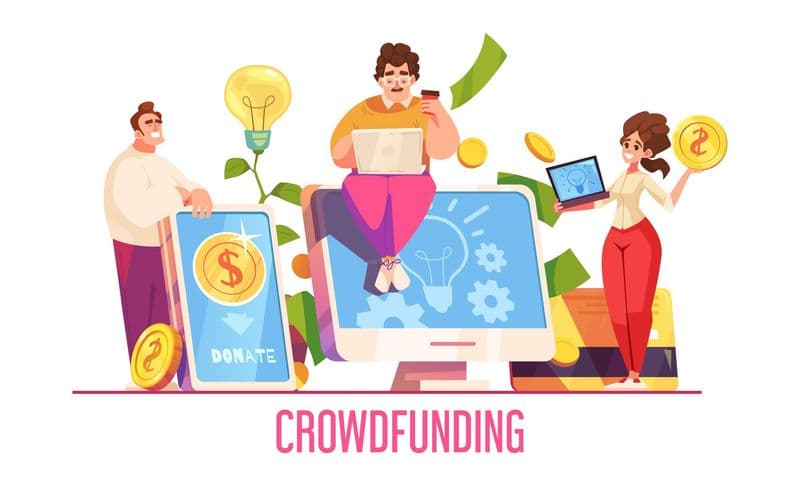Breaking into tech sales can feel overwhelming, especially for those new to the industry. The world of software, hardware, and digital solutions is fast-paced, jargon-heavy, and highly competitive. However, with the right approach and mindset, beginners can not only survive but thrive in this lucrative field. This comprehensive guide covers actionable tips and proven strategies to help you get started and succeed in tech sales.
Understanding Tech Sales: The Basics
Tech sales involve selling technology products or services, such as software, hardware, SaaS platforms, or IT solutions, to businesses or consumers. Unlike traditional sales, tech sales often requires a blend of technical knowledge, consultative selling skills, and the ability to build long-term relationships.
Key Roles in Tech Sales
- Sales Development Representative (SDR): Focuses on prospecting and qualifying leads.
- Account Executive (AE): Manages the sales process and closes deals.
- Customer Success Manager (CSM): Ensures clients achieve value post-sale and encourages renewals.
1. Master the Fundamentals: Skills and Knowledge
Develop Essential Sales Skills
To stand out, focus on mastering core sales skills:
- Communication: Clearly articulate complex ideas.
- Active listening: Understand the prospect’s needs.
- Problem-solving: Offer tailored solutions.
- Relationship-building: Foster trust and loyalty.
Build Product and Industry Knowledge
You must thoroughly understand your product. Study specifications, use cases, and customer testimonials. Connect with product development teams or read articles about your offering to gain deeper insights. Familiarize yourself with industry trends, sales terminologies, and the tools used in tech sales, such as CRM systems and lead finders.
2. Networking: Connect and Learn From Others
Leverage Professional Networks
- Join sales communities (e.g., RevGenius, LinkedIn groups) to immerse yourself in industry conversations and pick up tech sales jargon and methodologies.
- Set up virtual coffee chats with experienced tech sellers. Ask for advice, recommended reading, and introductions to others in their network.
- Attend industry events, webinars, and workshops to expand your connections and learn from peers.
Find Mentors
A mentor can provide invaluable feedback on interviews, sales pitches, and career development. Don’t hesitate to reach out to seasoned professionals for guidance.

3. Prospecting and Lead Generation
Identify and Qualify Leads
Prospecting is the lifeblood of tech sales. Use targeted research, networking, and outreach to find potential clients who could benefit from your solutions. Before pitching, qualify your leads:
- Do they have the budget?
- Are they actively seeking a solution?
- Are they the decision-makers?
- What are their pain points?
Leverage Social Selling
Be active on platforms like LinkedIn:
- Share relevant content and insights.
- Engage with prospects’ posts.
- Use social listening tools to spot opportunities.
A strong social presence boosts your credibility and helps you connect with buyers where they spend time online.
4. Needs Assessment: Listen Before You Pitch
Active Listening and Discovery
Before presenting your product, ask probing questions to uncover the prospect’s unique challenges. Listen more than you speak. This helps you understand not just what they want, but why they need it.
Tailor Your Solution
Use the insights you gather to craft a personalized pitch. Show how your product solves their specific problems, rather than reciting a list of features.
5. Value Over Features: Focus on Solutions
Highlight Benefits, Not Just Features
Tech buyers are inundated with feature lists. Instead, focus on the one or two benefits that directly address the customer’s pain points. Explain how your solution makes their job easier, saves time, or reduces costs.
Use Data and Precision
Tech buyers appreciate hard facts. Use data points and case studies to differentiate your product and establish credibility. Avoid vague claims—be specific about the value you deliver.

6. Speak Their Language (But Avoid Jargon Overload)
Understand the Buyer’s Perspective
Learn the terminology and challenges of the industries you’re selling into. This builds trust and positions you as a credible partner.
However, avoid overwhelming prospects with technical jargon. Use plain language to explain your product’s value, and adjust your depth of detail based on the audience’s technical expertise.
7. Handling Objections and Competition
Anticipate and Address Objections
Prepare thoughtful responses to common concerns about price, implementation, or ROI. Listen to the objection, empathize, and provide clear, data-backed answers.
Differentiate From Competitors
In tech sales, you’ll often face stiff competition. Address the competition early, but avoid getting bogged down in feature-by-feature comparisons. Instead, position your solution as a unique answer to the customer’s problem, using testimonials and case studies to back up your claims.
8. Storytelling: Make Your Pitch Memorable
Use Customer Stories
Share real-life examples of how your product helped similar companies overcome challenges. Stories are more relatable and memorable than statistics alone.
“One of our clients, a fast-growing SaaS company, was spending 10+ hours a week on manual data entry. After switching to our platform, they cut that time in half and reallocated those hours to strategy.”
9. The Power of Demos and Free Trials
Let Prospects Experience the Product
Tech products can be intangible until users see them in action. Offer free trials or live demos to let prospects experience the value firsthand. This builds confidence and makes your solution more tangible.
10. Follow-Up and Nurture Relationships
Consistent, Value-Driven Follow-Up
Most sales don’t close after the first conversation. In B2B tech sales, it often takes 6 to 8 touches to generate a viable lead. Follow up with value—send case studies, industry reports, or helpful resources. Persistence and consistency keep your product top of mind.
Post-Sale Support
A great sales experience doesn’t end with the contract. Ensure customers have access to onboarding, documentation, and support. A strong post-sale relationship leads to renewals, upsells, and referrals6.
11. Continuous Learning and Growth
Invest in Your Development
Tech sales are constantly evolving. Stay ahead by:
- Reading sales books and industry blogs.
- Taking online courses on sales techniques and product knowledge.
- Seeking feedback from peers and mentors.
Embrace Technology
Leverage CRM systems, AI tools, and sales automation platforms to streamline your workflow, personalize outreach, and focus on high-value activities.

12. Mindset: Resilience and Adaptability
Embrace Rejection
Rejection is part of the process. Learn from each “no” and use feedback to refine your approach. Persistence is a hallmark of successful tech sales professionals.
Stay Curious and Adaptable
Tech sales rewards those who are curious, adaptable, and eager to learn. Stay informed about new products, market shifts, and emerging trends.
Conclusion: Your Tech Sales Journey Starts Now
Getting started in tech sales is both challenging and rewarding. By mastering the fundamentals, building your network, focusing on value, and continuously learning, you’ll set yourself apart as a trusted advisor, not just a salesperson.
Remember:
- Build relationships, not just pipelines.
- Listen more than you speak.
- Focus on solving problems, not pushing products.
- Leverage technology and data to work smarter.
- Never stop learning.
With these tips and a commitment to growth, you’ll be well on your way to a successful career in tech sales.
Quick Reference: Tech Sales Tips for Beginners
- Develop core sales and communication skills.
- Build deep product and industry knowledge.
- Network with professionals and find mentors.
- Qualify leads before pitching.
- Focus on solving customer problems, not just listing features.
- Use data and real-world examples to build credibility.
- Speak the buyer’s language but avoid unnecessary jargon.
- Differentiate your solution from competitors.
- Leverage demos, free trials, and storytelling.
- Follow up consistently and nurture relationships
- Invest in your learning and use technology to your advantage.
- Stay resilient and adapt to change.
Start applying these strategies today, and watch your tech sales career take off!


